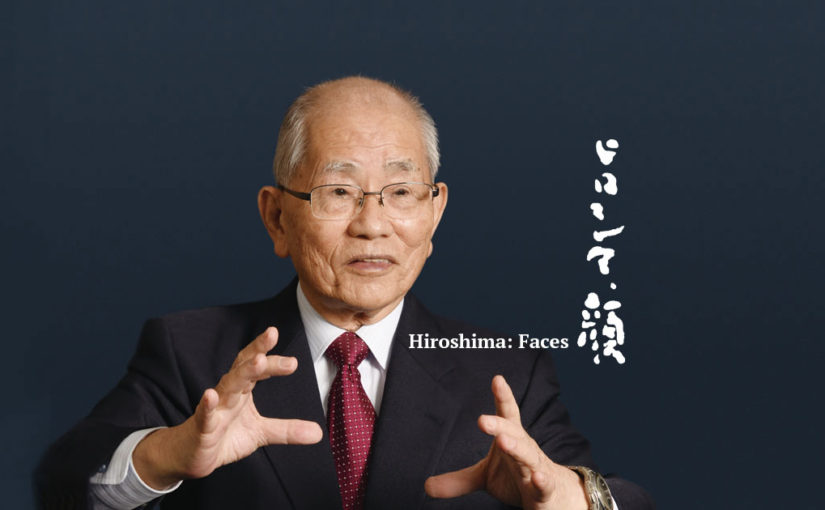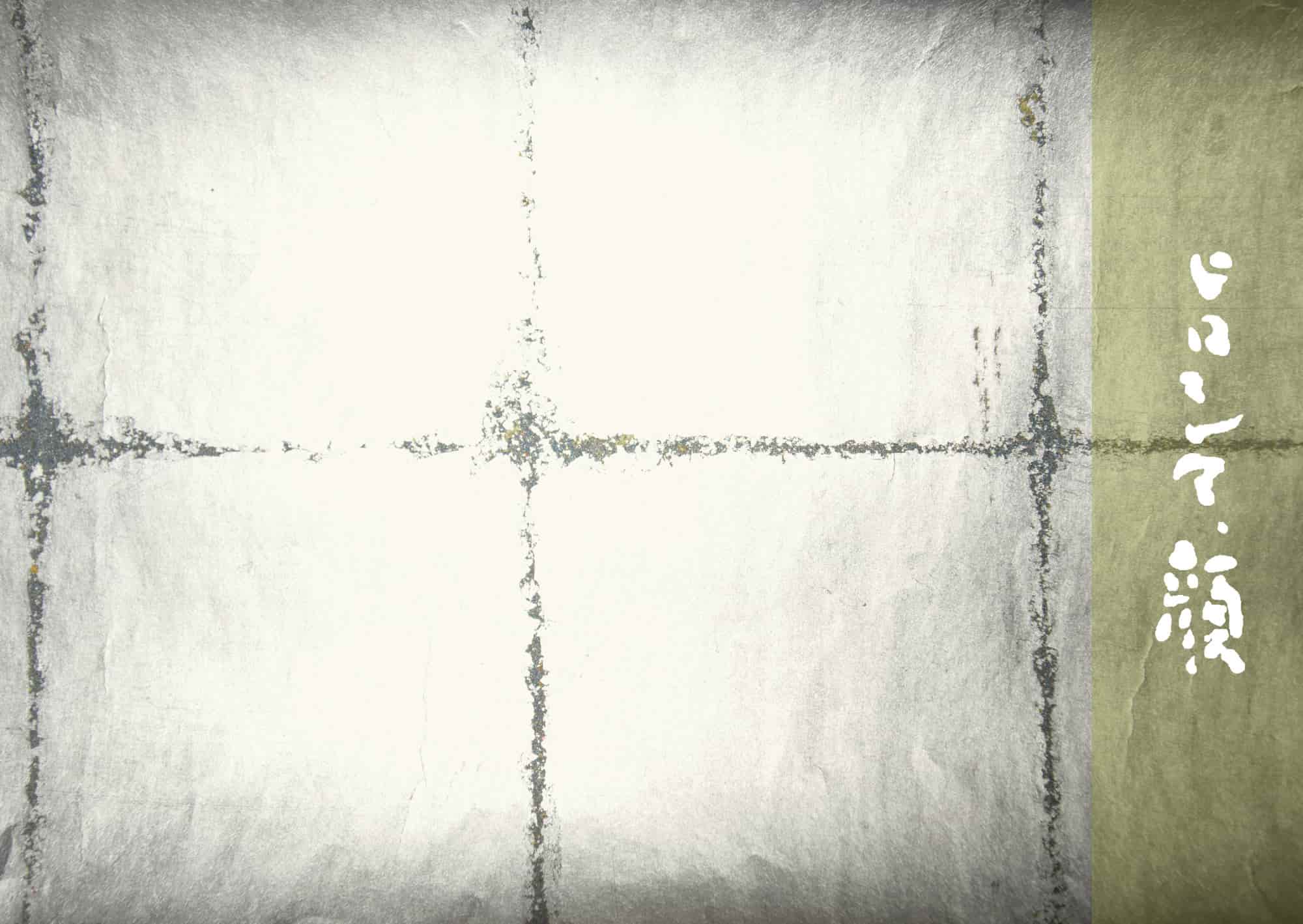
I have worked with many hibakusha both in the examining room and in nursing homes.
The patients call me a teacher, but they teach me a lot.

I have worked with many hibakusha both in the examining room and in nursing homes.
The patients call me a teacher, but they teach me a lot.

-
Story.1
Nanao Kamada
Nanao Kamada
On March 20, 1937, Nanao Kamada was born as the seventh son of a family living in Mukden, Manchuria (now Shenyang, China). His father ran a electricity company, and the family was well-off, living in a Japanese village. His eldest brother, Masami, was expected to be a doctor, but he died from disease before graduating from the medical university of Manchuria (now China Medical University). Ever since he was young, Nanao felt he was expected to become a doctor by his parents, who grieved deeply for the loss of their eldest son.
In 1945, Nanao was eight years old and had entered elementary school. On August 15, 1945, Japan surrendered, and the boy’s life changed completely. In order to protect the Japanese village, his father and brother had built a two-kilometer fence with electrical wires around the village. Their life was in a state of high alert. During that period, Nanao’s father passed away on May 6, 1946, due to aggravated tuberculosis. The family decided to return to Japan.
After a long voyage, on July 17, 1946, they arrived at the port of Senzaki, Nagato City in Yamaguchi Prefecture, then made their way to Kagoshima, from where the Kamada family originated. Nanao grew up with good spirits and motivation toward school and sports. People spoke Kagoshima dialect, which was unfamiliar to him at first. Then they moved to Tagawa City, Fukuoka Prefecture, where his third eldest brother, Saburo, had a job. Nanao entered the Prefectural East Tagawa High School (currently known as Fukuoka Prefectural Toyo High School). Wishing to become a doctor, he studied hard to enter Hiroshima University after reading about it in the magazine Keisetsu Jidai. Despite discouraging facts, such as the university being 7.2 times more competitive than others and his lack of funds, which prevented him from spending another year to prepare for the entrance exam, his brother, on behalf of their passed father, encouraged him to try. Nanao rallied his spirit and studied hard, and he passed the entrance exam. Then, his new life began.
From Manchuria to Kushu, overcoming the waves of time.
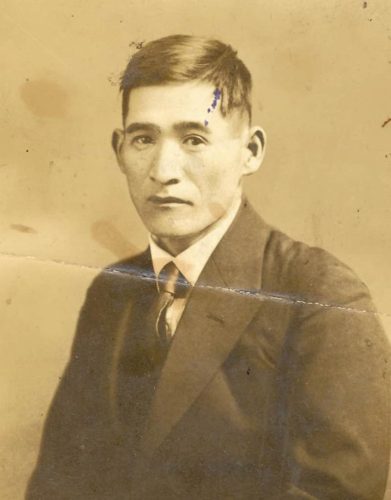
Nanao’s father, Masayoshi, was born in 1890 (Meiji Era), in Izaku village on the Satsuma Peninsula, currently known as Hioki, Kagoshima Prefecture. He was the family’s second son, and therefore he did not inherit the land. Migration to Manchuria was a popular option at the time.
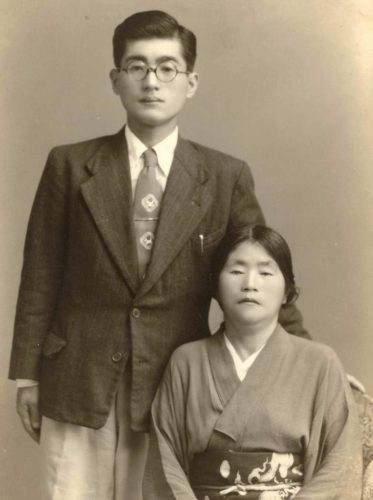
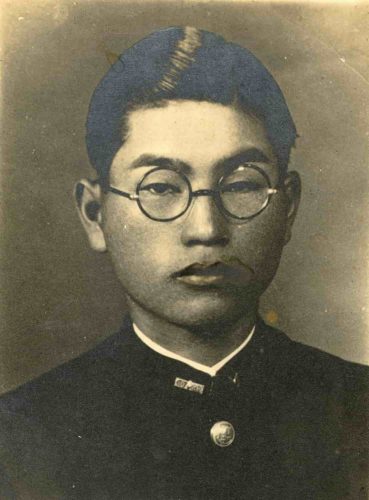
Masami, the eldest son of the Kamada family, died from disease in 1939 (Showa Era). Wishing to become a doctor, he studied at a medical university as expected by his father. His will was succeeded by Nanao.
After their father had passed away, Saburo, the third brother, took care of Nanao both physically and mentally. His mother, Some, took care so Nanao did not feel inferior due to the absence of his father. The photograph was taken after his mother’s second stroke in 1952 (Showa Era).

After their father had passed away, Saburo, the third brother, took care of Nanao both physically and mentally. His mother, Some, took care so Nanao did not feel inferior due to the absence of his father. The photograph was taken after his mother’s second stroke in 1952 (Showa Era).
From his secure life in Manchuria, Nanao’s life changed dramatically after the war. Distressing memories such as betrayal from trusted acquaintances, Russian and Chinese soldiers lurking in the Japanese town, the death of his father, his family returning to Japan with his father’s remains but without any of their belongings… these memories were mixed with a sense of humiliation, frustration, sadness, and restlessness. Nanao, who later worked with many hibakusha as a doctor, said “My foundation to deal with people’s misery might have developed in my childhood.”
With support and his family’s expectations, Nanao went into medicine.

In 1998, Nanao gave a lecture at the medical university his eldest brother, Masami, had attended. On the occasion, all his remaining brothers gathered and visited the memorable places from their childhood (Photo: from left, Mutsuo, Nanao, Saburo, Itsuo).
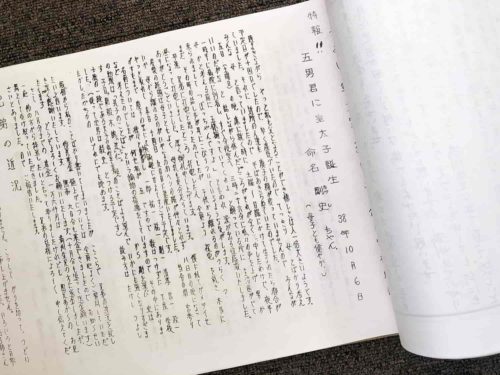
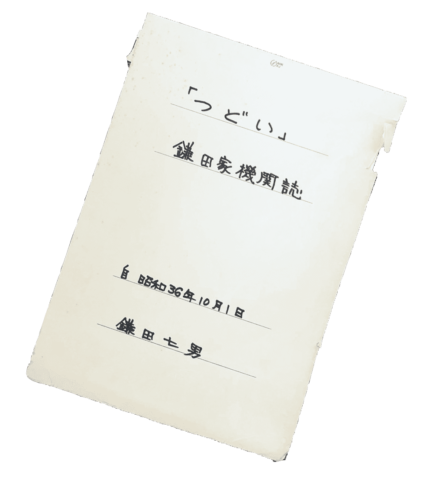
This is the newsletter by which the Kamada brothers shared their situations.
His elder brothers, who used to share hardships and helped Nanao, were living in different prefectures. They proposed writing a “Brothers’ Newsletter” to keep in touch, which they continued for 44 years from 1961 to 2005. Nanao said, “I was too busy to write to them, and they often gave me an earful for it. They kept on writing, which now helps us to remember those days, and the newsletters became our treasure.” Nanao’s organizational skills, on display in his meticulous records for his studies, might have come from his brothers.

-
Story.2
Nanao Kamada
Nanao Kamada successfully entered the Hiroshima University School of Medicine in 1955, despite how competitive it was. He said “that accomplishment, after my late father’s as well as mother and brothers’ expectations, made me cry.” Ten years after the atomic bombing, his life in Hiroshima started. In those days, the city was still devastated, with a vacant main street (now Peace Boulevard) running from east to west and jam-packed with shacks along the river. The impact of the atomic bombing remained vividly. Nanao remembers seeing people with long sleeves in the middle of summer or wearing hats low over their eyes and guessed that they were hibakusha.
Although it was not easy for Nanao to fully support his student life with his small income from his brothers, part-time tutoring, and a scholarship, he spared no expense for medical textbooks. Beside studying hard, he joined the yacht club and practiced well. When he turned 23, in 1960, he won the championship in the two-seater snipe class at the first Miyajima yacht race. His connections in the yacht club later changed his future.
After graduating from university, Nanao interned for a year at Kyushu Kouseinenkin Hospital (now JCHO Kyushu Hospital) in Fukuoka in 1961. He was training to become a surgeon. “I though surgery suited my temper. In those days, however, we didn’t have surgical gloves, so before a surgery we used to rub our hands with scourer made of plant fibers, which caused dermatitis on my hands.” He gave up a career as a surgeon and was forced to reconsider his future, at which time an older member of the yacht club invited him to join the newly established Research Institute for Radiation Biology and Medicine. A new department for internal medicine for radiation exposure was planned to open the next year. Nanao was moved by this unique project, the likes of which scarcely existed anywhere in world at the time.
In 1962, when he was 25 years old, he joined the clinical research team in the internal medicine for radiation exposure department. He met with the head of the department, Professor Masanobu Tomonaga, who had graduated from Nagasaki Medical University and who specialized in hematology. He also attended doctor Takashi Nagai, a well known researcher and essayist in Japan. Professor Tomonaga focused on the development of leukemia in hibakusha. In order to better understand the mechanism by which leukemia developed in hibakusha, and how it was different from standard leukemia, he directed Nanao to study chromosomes.
In the morning, Nanao attended incoming patients at the internal medicine for radiation exposure department, and in the afternoon, the hospitalized patients. He worked on his research until midnight. His efforts together with his colleagues bore fruit. They found in the hibakusha’s blood the Philadelphia chromosome, which is found in Chronic Myeloid Leukemia. In November 1962, they published a paper titled “Case of early detected Chronic Myeloid Leukemia.” Seventeen years after the atomic bombing, Nanao’s life “walking together with hibakusha” began.
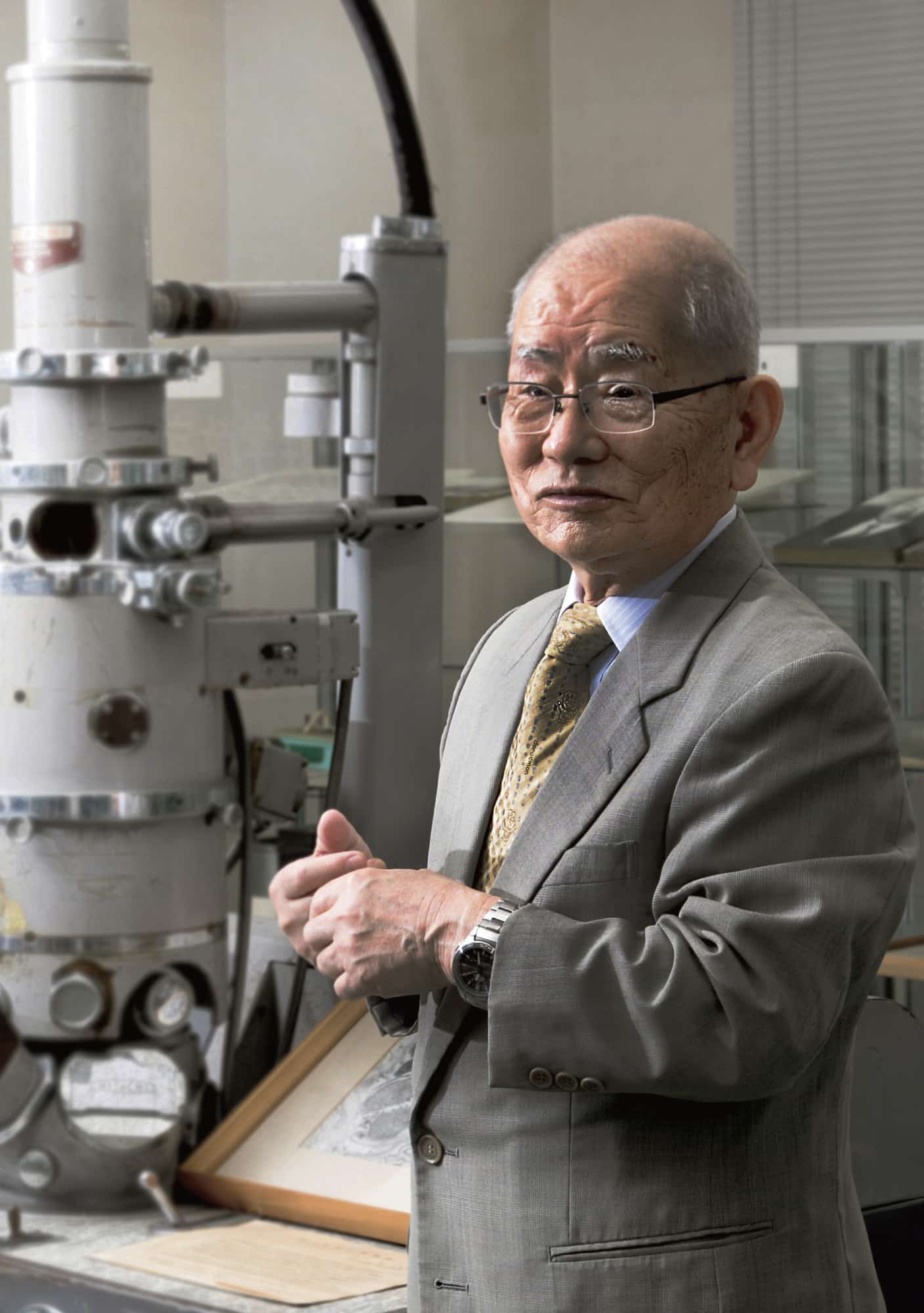
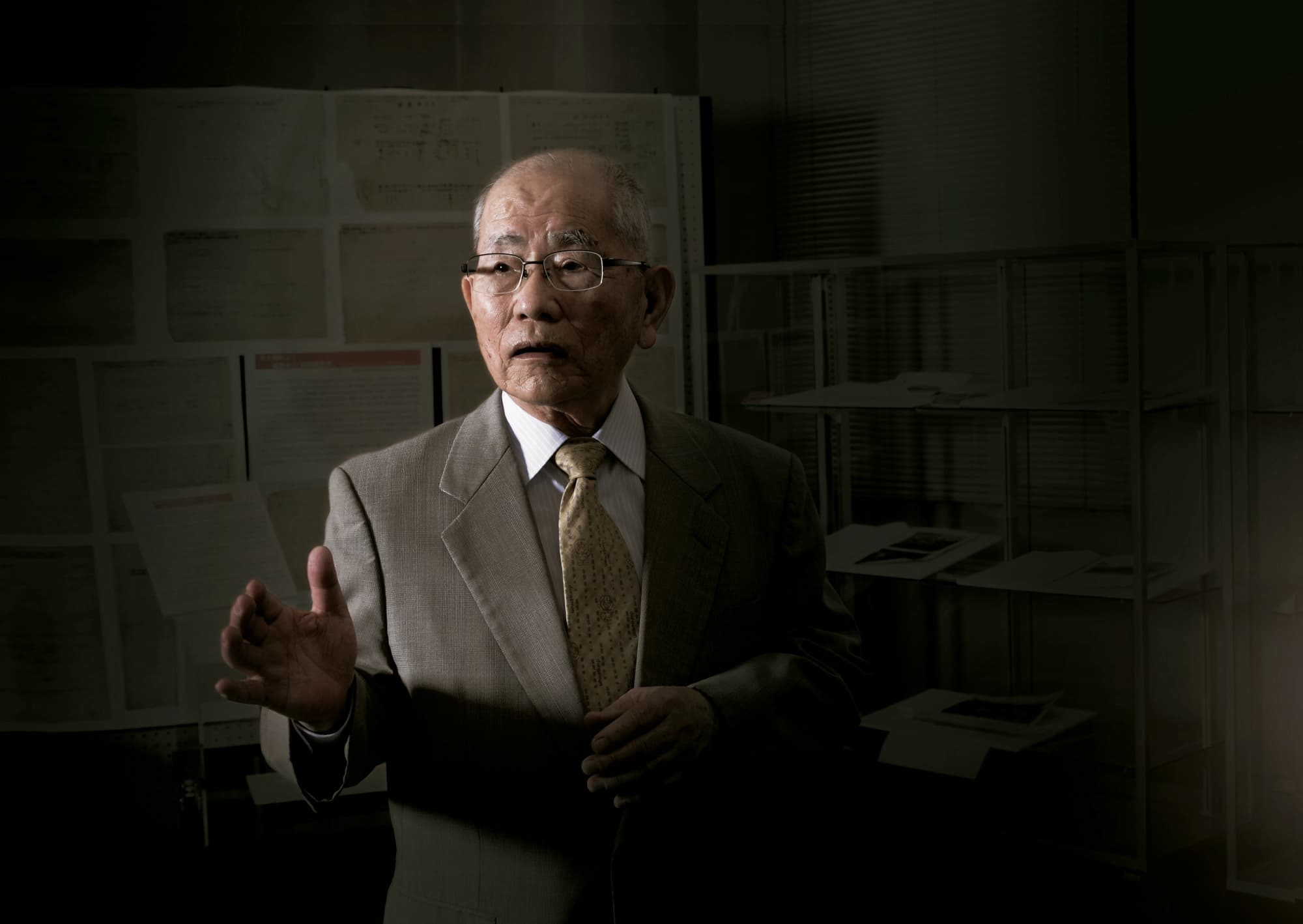
August 6, 1945, 8:15
An eight year-old boy survived the blast within 500 meters of the hypocenter because he happened to be in the basement of his elementary school.
He lost his parents and siblings due to the atomic bomb, and he ended up in an orphanage after being rejected by his relatives.
As an adult, he got married and achieved happiness.
However, he suffered from gastric cancer and underwent surgery twice.
His first grandson died of leukemia.
To avoid hurting his feelings, his son kept the cause of his grandson’s death hidden from him.
Later, he suffered from radiation-induced interstitial pneumonia, which caused difficulty breathing.
Twenty-one percent of his chromosomes were abnormal.
A little over sixty years after being exposed to the atomic bomb, in early winter, he committed suicide.
Nuclear weapons abuse survivors throughout their lives, physically, socially, and psychologically.
The above statement describes one of the hibakusha exposed to the atomic bomb near the hypocenter who Dr. Nanao had kept in touch with. Those who miraculously survived the explosion at close range, which could kill one instantly, greatly suffered from aftereffects on their body, mind, and life.
During Nanao’s 70 years of research, 66 of his subjects passed away.
“Approximately 50% of the deceased were suffering from cancer. The DNA of their stem cells of each organ were instantly injured by the radiation, which then caused cancer after many years. Each organ has different susceptibility to radiation, so cancer can develop at different times, which is why, instead of metastasis, we experience a second or third cancer in one body.” Nuclear weapons injure human DNA and continue to harm survivors throughout their lives. How many people are aware of this?

August 6, 1945, 8:15
An eight year-old boy survived the blast within 500 meters of the hypocenter because he happened to be in the basement of his elementary school.
He lost his parents and siblings due to the atomic bomb, and he ended up in an orphanage after being rejected by his relatives.
As an adult, he got married and achieved happiness.
However, he suffered from gastric cancer and underwent surgery twice.
His first grandson died of leukemia.
To avoid hurting his feelings, his son kept the cause of his grandson’s death hidden from him.
Later, he suffered from radiation-induced interstitial pneumonia, which caused difficulty breathing.
Twenty-one percent of his chromosomes were abnormal.
A little over sixty years after being exposed to the atomic bomb, in early winter, he committed suicide.
Nuclear weapons abuse survivors throughout their lives, physically, socially, and psychologically.
The above statement describes one of the hibakusha exposed to the atomic bomb near the hypocenter who Dr. Nanao had kept in touch with. Those who miraculously survived the explosion at close range, which could kill one instantly, greatly suffered from aftereffects on their body, mind, and life.
During Nanao’s 70 years of research, 66 of his subjects passed away.
“Approximately 50% of the deceased were suffering from cancer. The DNA of their stem cells of each organ were instantly injured by the radiation, which then caused cancer after many years. Each organ has different susceptibility to radiation, so cancer can develop at different times, which is why, instead of metastasis, we experience a second or third cancer in one body.” Nuclear weapons injure human DNA and continue to harm survivors throughout their lives. How many people are aware of this?
His life as a researcher
| 1967 (29 year-old) | Studied at California University (Photo 1.) |
| 1970 (33 year-old) | Submitted the thesis “The effect of radiation on chromosomes of bone marrow cells” to University of Nagasaki, which earned him his PhD. |
| 1972 (35 year-old) | Conducted a survey on surviving hibakusha within 500m from the atomic bomb’s hypocenter in the research project “Nuclear Medicine Research.” |

(Photo 1) He pursued his training as a researcher in the division of clinical pathology, San Francisco Medical Centre.
| 1978 (41 year-old) | Presented his work in the International Society of Hematology, which was introduced in the textbook “Wintrobe’s Clinical Hematology”. |
| 1982 (45 year-old) | Hiroshima Doctors Association awarded him the “Hiroshima Medical Prize” for the series of work he presented to the research group on the after-effects of the atomic bomb. |
| 1985 (48 year-old) | He was appointed as a professor of hematology, research division, in the Nuclear Medicine Research Institute of Hiroshima University. (Photo 2.) |
| 1988 (51 year-old) | He was appointed as the director of IPPNW’s Japan division. |
| 1991 | Hiroshima International Council for Health Care of the Radiation-exposed (HICARE) was established. |
| 1997~99 (60~62 year-old) | He was appointed as the chairman of HICARE. |
| 2000 (63 year-old) | He visited Tokai village, Ibaraki Prefecture, to study a criticality radiation exposure accident that had occurred there, and to support local people. (Photo 3.) He retired from the Nuclear Medicine Research Institute of Hiroshima University. |
| 1967 (29 year-old) | Studied at California University (Photo 1.) |
| 1970 (33 year-old) | Submitted the thesis “The effect of radiation on chromosomes of bone marrow cells” to University of Nagasaki, which earned him his PhD. |
| 1972 (35 year-old) | Conducted a survey on surviving hibakusha within 500m from the atomic bomb’s hypocenter in the research project “Nuclear Medicine Research.” |
| 1978 (41 year-old) | Presented his work in the International Society of Hematology, which was introduced in the textbook “Wintrobe’s Clinical Hematology”. |
| 1982 (45 year-old) | Hiroshima Doctors Association awarded him the “Hiroshima Medical Prize” for the series of work he presented to the research group on the after-effects of the atomic bomb. |
| 1985 (48 year-old) | He was appointed as a professor of hematology, research division, in the Nuclear Medicine Research Institute of Hiroshima University. (Photo 2.) |
| 1988 (51 year-old) | He was appointed as the director of IPPNW’s Japan division. |
| 1991 | Hiroshima International Council for Health Care of the Radiation-exposed (HICARE) was established. |
| 1997~99 (60~62 year-old) | He was appointed as the chairman of HICARE. |
| 2000 (63 year-old) | He visited Tokai village, Ibaraki Prefecture, to study a criticality radiation exposure accident that had occurred there, and to support local people. (Photo 3.) He retired from the Nuclear Medicine Research Institute of Hiroshima University. |

(Photo 1) He pursued his training as a researcher in the division of clinical pathology, San Francisco Medical Centre.
(Photo 2) On his appointment as a professor (middle, in the front row).
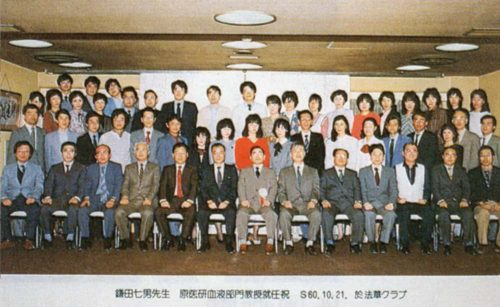
(Photo 2) On his appointment as a professor (middle, in the front row).
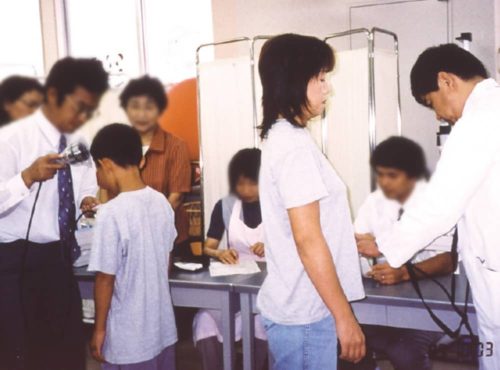
(Photo 3) As one of the medical staff, he visited Tokai village, Ibaraki Prefecture, to study a JCO criticality radiation exposure accident.
His life work “Clinical research on hibakusha exposed within 500 meters of the hypocenter”
According to the survey conducted by the Nuclear Medicine Research, Hiroshima city, and Japan’s public broadcaster (NHK; Nihon Hoso Kyokai), seventy-eight people survived within 500 meters of the hypocenter. Nanao conducted follow-up surveys on them with periodic health checks. With serum and cellular study, the percentage of chromosome abnormality was used to estimate the survivors’ radiation dose, together with humoral and cellular abnormalities that could be caused by radiation. He emphasized the importance of face-to-face interviews with hibakusha, especially their ordinary chat and complaints, in which he picked up on some clues regarding their medical condition. He reported “Several people complained about headaches, which were revealed to be caused by meningiomas. After follow-up surveys, the morbidity for meningioma was revealed to be high among those survivors within 1 kilometer of the hypocenter”.
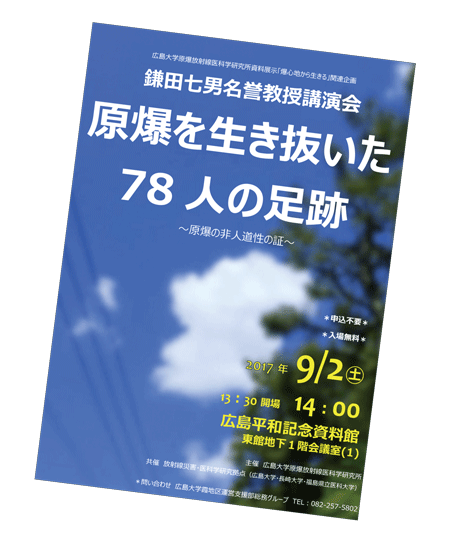
A public lecture held in 2017.
Findings from the follow-up survey on hibakusha within close range.
- Broken family bonds, inability to form a family (high rate of unpartnered, divorced, or old and lonely) (1975)
- Chromosomal abnormalities (Carcinogenic changes) (1975)
- Oncogenic changes in hibakusha, who are otherwise healthy (1990)
- The rate of double or triple cancers (2004)
- Incremental anxiety with aging (2006)
- Atomic bomb creates “life-long abuse“ of survivors (2018)
※(published year)
Nanao said “We revealed much new evidence that will contribute to medicine in general. All thanks to hibakusha who demonstrated everything with their own bodies.” To thank and show respect to those hibakusha who stood with him for many years though medical examinations, including painful bone-marrow aspiration, skin biopsy and repeated blood sampling, he continued periodical health-checks and conversations using his own time and money, even after he retired from Hiroshima University. Sending souvenirs, using telephone and email, he continued to care for them.

◀Nanao talks while putting himself at the same eye level, and tries to listen without interruption, an attitude that shows respect. Nanao meets them as a person, not just as a doctor.
Nanao talks while putting himself at the same eye level, and tries to listen without interruption, an attitude that shows respect. Nanao meets them as a person, not just as a doctor.
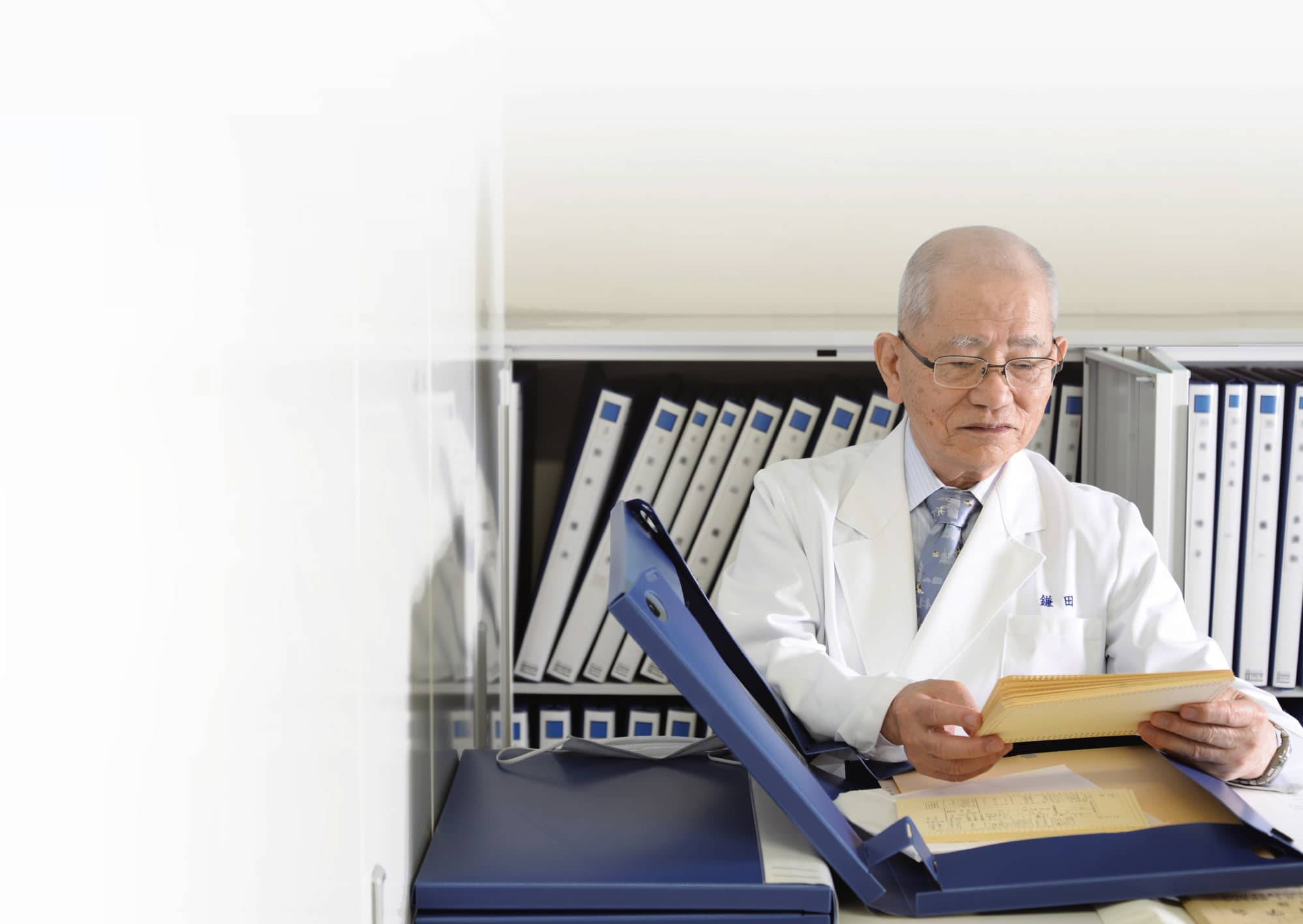
I used to believe that
to study the effect of radiation on the human body,
we ought to examine those who were exposed to it at close range or with a high dose.
But, those at the nursing home for atomic bomb survivors changed my mind with their
various experiences of exposure.

I used to believe that
to study the effect of radiation on the human body,
we ought to examine those who were exposed to it at close range or with a high dose.
But, those at the nursing home for atomic bomb survivors changed my mind with their
various experiences of exposure.

-
Story.3
Nanao Kamada
After 38 years working as a physician researcher, Nanao retired from Hiroshima University and made his way to a city hospital in 2000, then became the director of the Hiroshima Atomic Bomb Survivors Relief Foundation and a principal of the Kurakake Nozomi Nursing Home. His salary decreased, but it did not sway him. Nanao said, “As long as it was for hibakusha, who I worked for did not matter to me.”
He disciplined himself “to level himself with the hibakusha’s eyes, to be fair and honest,” and refused to sit behind a desk. To communicate more with the nursing home residents and staff, as well as to be aware of small changes and problems, he walked around the facility and refused to stay in his room. To increase recreation time for residents, he organized 25 new events in a year. As an increasing number of residents were bedridden because of age, he had televisions installed in each room to enable them to see the events happening in the main room, which let them join in conservations with other residents.
Nanao was able to remember all 194 of his coworkers’ names and faces. “It became a matter of course for me to pay attention to my coworkers, who in turn enrich the living environment for the hibakusha.” He did not hesitate to work extra to improve the competency and motivation of his coworkers. He invited them for lectures and taught them many times how radiation affects our health. The facility was recognized by the city as an educational unit for the training of gastric fistula and suctioning, which yielded many certified professionals. He also incorporated the idea of terminal-care, and the facility worked hard for the care of elderly hibakusha to spend their final days in dignity. In the annual celebration, he praised those who obtained new certifications, and gave them commemorative photo albums that he had made. He did not forget the humor to sing and dance with his coworkers.
Nanao also proactively participated in social activities and academic meetings. The residents’ stories of their varied experiences of the atomic bombing helped Nanao’s research on indirect exposure, such as of those who entered the city after the bombing, those who suffered from internal radiation, and following generations.
During the 16 years he spent working at the nursing home, every day he woke up at 5:30 AM, worked from 8:30 AM to 8:30 PM, and went to bed at 11:30 PM. As a leader of the Atomic Bomb Nursing Home, as well as a researcher, he aimed high and worked to his limit. He remarked, “It was a fulfilling time, comparable to the time I devoted to research in the university.” His enthusiasm is boundless.

-
Story.3
Nanao Kamada
After 38 years working as a physician researcher, Nanao retired from Hiroshima University and made his way to a city hospital in 2000, then became the director of the Hiroshima Atomic Bomb Survivors Relief Foundation and a principal of the Kurakake Nozomi Nursing Home. His salary decreased, but it did not sway him. Nanao said, “As long as it was for hibakusha, who I worked for did not matter to me.”
He disciplined himself “to level himself with the hibakusha’s eyes, to be fair and honest,” and refused to sit behind a desk. To communicate more with the nursing home residents and staff, as well as to be aware of small changes and problems, he walked around the facility and refused to stay in his room. To increase recreation time for residents, he organized 25 new events in a year. As an increasing number of residents were bedridden because of age, he had televisions installed in each room to enable them to see the events happening in the main room, which let them join in conservations with other residents.
Nanao was able to remember all 194 of his coworkers’ names and faces. “It became a matter of course for me to pay attention to my coworkers, who in turn enrich the living environment for the hibakusha.” He did not hesitate to work extra to improve the competency and motivation of his coworkers. He invited them for lectures and taught them many times how radiation affects our health. The facility was recognized by the city as an educational unit for the training of gastric fistula and suctioning, which yielded many certified professionals. He also incorporated the idea of terminal-care, and the facility worked hard for the care of elderly hibakusha to spend their final days in dignity. In the annual celebration, he praised those who obtained new certifications, and gave them commemorative photo albums that he had made. He did not forget the humor to sing and dance with his coworkers.
Nanao also proactively participated in social activities and academic meetings. The residents’ stories of their varied experiences of the atomic bombing helped Nanao’s research on indirect exposure, such as of those who entered the city after the bombing, those who suffered from internal radiation, and following generations.
During the 16 years he spent working at the nursing home, every day he woke up at 5:30 AM, worked from 8:30 AM to 8:30 PM, and went to bed at 11:30 PM. As a leader of the Atomic Bomb Nursing Home, as well as a researcher, he aimed high and worked to his limit. He remarked, “It was a fulfilling time, comparable to the time I devoted to research in the university.” His enthusiasm is boundless.
To tell the truth of Hiroshima to as many people as possible
| 2001 (64 year-old) | Nanao was appointed as the head director of the Hiroshima Atomic Bomb Survivors Relief Foundation, and as a principal of Kurakake Nozomi Nursing Home (Photo 1) |
| 2001 (65 year-old) | He was awarded the Nagai Takashi Peace Memorial・Nagasaki Prize (Photo 2) |
| 2005 (68 year-old) | Published “One day in Hiroshima: An Oral History” (Photo 3) |
| 2006 (69 year-old) | Presented “Leukemia of those who entered the city after the explosion” at a research group of the after-effect of atomic bomb. |
| 2007 (70 year-old) | Presented in a Post-Traumatic Stress Disorder (PTSD) Symposium in Italy. |
| 2008 (71 year-old) | Presented in a world conference (India) of the International Physicians for the Prevention of Nuclear War (IPPNW). |
| 2011 | The Great East Japan Earthquake |
| Visited Fukushima Prefecture and took part in radiation research (Photo 4). | |
| 2012 (75 year-old) | Presented on “the internal radiation exposure in Fukushima,” also presented at an IPPNW Japan conference. |
| 2015 (78 year-old) | Organized the World Forum of Nuclear Survivors (Hiroshima) and supervised the reports. (Photo 5) |
| 2016 (79 year-old) | Presented “The internal exposure proved by lung cancer histology” |
| 2017 (80 year-old) | Retired from Hiroshima Atomic Bomb Survivors Relief Foundation and from Kurakake Nozomi Nursing Home. Appointed as a visiting professor at Hiroshima University. Appointed as the head of Health-check center at Hongo Central Hospital. |
| 2018 (81 year-old) | Retired from the above hospital after the 2018 heavy rain disaster. Works at the Hiroshima Atomic Bomb Casualty Council (health check and improvement center) part-time. |

▲(Photo 1) In those days, Nozomi Nursing Home had the largest capacity in west Japan, which attracted various people to visit, including school students for peace study, medical residents, nursing care trainees, nobles and the prime minister at the time. The workplace was sometimes nerve wracking, but it encouraged him to emphasize the happiness of the users and fulfillment of his coworkers over anything.
▼(Photo 2) Takashi Nagai, PhD, was a patient who Professor Tomonaga (Nanao’s best teacher) took care of till the end. Thus, for him, this prize came with deep emotions.
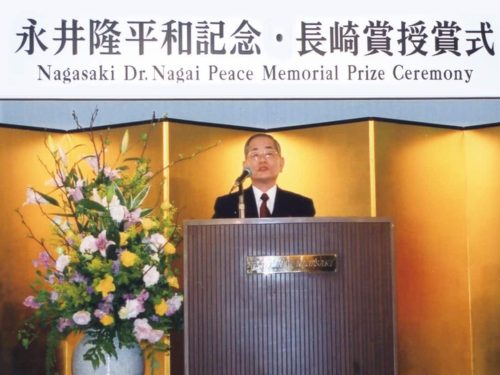
▶(Photo 3) Nanao assembled the notes he wrote for staff training at the Nozomi Nursing Home and published them in a book as a peace education material and funded the process himself. He promised to donate the profits to the Relief Foundation and did so accordingly. He had the book translated into English, French, German, and Spanish, and uploaded it to the IPPNW Boston website, available to read and download for free.
▼(Photo 3) Nanao assembled the notes he wrote for staff training at the Nozomi Nursing Home and published them in a book as a peace education material and funded the process himself. He promised to donate the profits to the Relief Foundation and did so accordingly. He had the book translated into English, French, German, and Spanish, and uploaded it to the IPPNW Boston website, available to read and download for free.
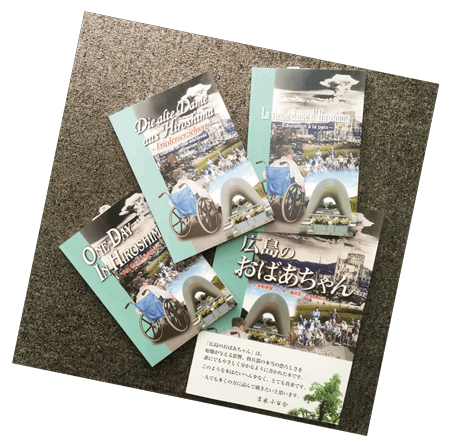
▼(Photo 4) With Dr. Osamu Saito, one of the former members of the Research Institute for Nuclear Medicine and Biology who lived in Fukushima, Nanao conducted independent research. He collected urine samples from people in Iidate Village and Kawamata Town and surveyed their activity for two months. Based on this data, he published (2012) estimated individual radiation doses.

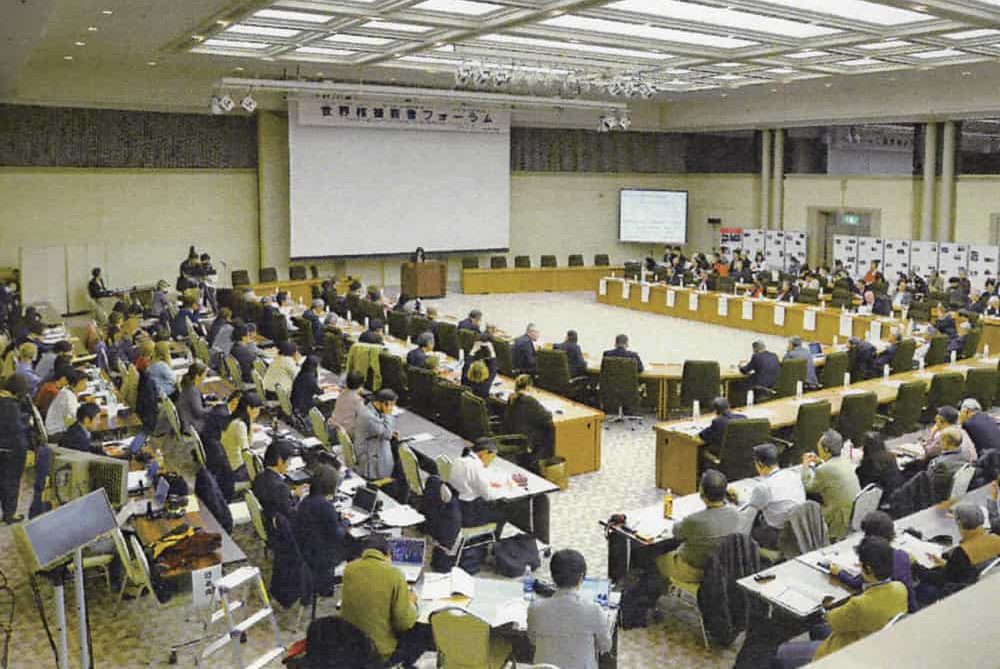
(Photo 5) Organized the World Forum of Nuclear Survivors (2015, Hiroshima)
Academic reports
(year of publication in parentheses)
Research findings on those directly exposed to radiation
- The chromosomal abnormality continued to remain in bone marrow of radiation survivors, which can be the basis of leukemia (1969)
- It was possible to estimate the radiation dose according to the chromosomal abnormalities.
- Those with high doses of radiation but otherwise healthy had a humoral factor that can cause the chromosomal abnormality in others (1978).
- Half lethal dose of radiation (the dosage at which half of those exposed will die within 30 days) was between 3.5 to 4 Sv (1989).
- The DNA of radiation survivors, who are otherwise healthy, contained oncogenic (RAS) changes (1988).
- Increased risk of breast cancer (1989) and brain tumor (1997) in those who were exposed during puberty.
Alongside the epidemiological works listed above, Nanao also worked in a hematology laboratory and discovered the developmental stages of Chronic Myeloid Leukemia (1978), the (8; 21) translocation in acute leukemia (1968 and 1976) and the genetic sequence of four translocation types of leukemia.
Research findings on those indirectly exposed to radiation, who entered Hiroshima city after the atomic bombing
One hundred and thirteen patients with leukemia, who developed the condition between 1970 to 1990, due to entering Hiroshima city after the atomic bombing, were analyzed. He discovered that survivors who entered the city on the 6th and 7th of August had especially high rates of developing leukemia (published in 2006).
Research findings on second-generation survivors
Nanao analyzed second-generation survivors using the Research Institute for Nuclear Medicine and Biology’s database and identified 119,311 people. He estimated the number of such people living in Hiroshima Prefecture to be 130,000 to 135,000, and further identified 94 leukemia patients. He discovered that if both parents were exposed to radiation, then the incidence of leukemia was higher compared to when only one of parent was exposed (2012). In addition, he found that second-generation survivors were more likely to develop leukemia if they were born within 10 years after their parents were exposed to radiation (2014).
Research findings on internal exposure to radiation
Nanao reported cases of multiple cancers in lung, stomach, colon, and blood that were developed 50 years after exposure, in which the patients not externally exposed to radiation but who were drinking water and eating vegetables polluted with “black rain” (2008). He showed proof of the radiation tracts in the lung cancer tissue, which were believed to be originated from decaying Uranium, using emulsion sensitization (2016).
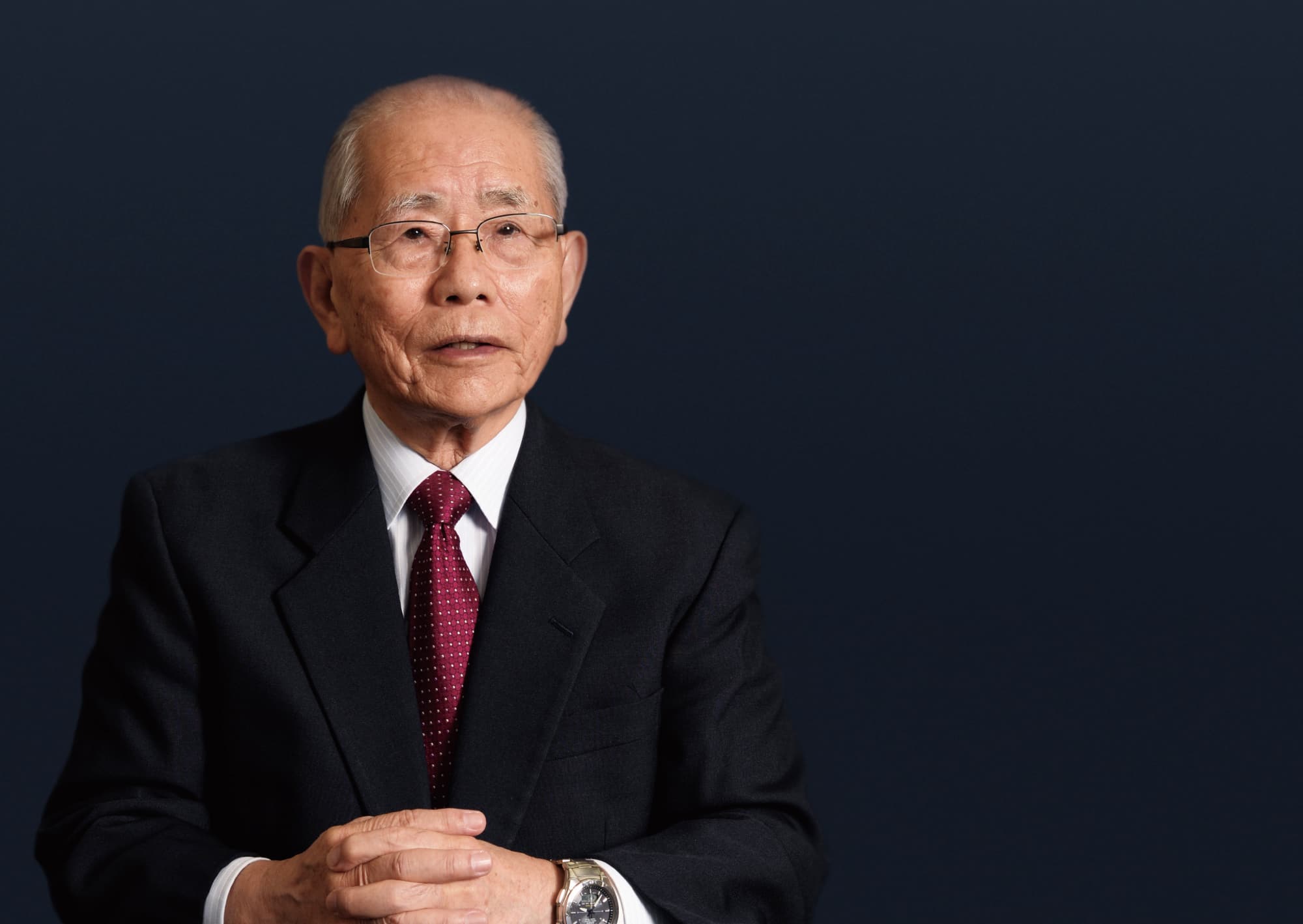
There are only two cities in the world on which an atomic bomb was dropped.
There is only one country in the world on which atomic bombs were dropped.
Those who experienced the inhumane destruction of nuclear weapons exist right here, living next to us.
We must think what we can do, what only we can do, and what we must do.
And we must act.

There are only two cities in the world on which an atomic bomb was dropped.
There is only one country in the world on which atomic bombs were dropped.
Those who experienced the inhumane destruction of nuclear weapons exist right here, living next to us.
We must think what we can do, what only we can do, and what we must do.
And we must act.
Edited and produced by ANT-Hiroshima
Photography by Mari Ishiko
Text by Mika Goto
Translation by Shusei Fukuyama
Translation edited by Annelise Giseburt

